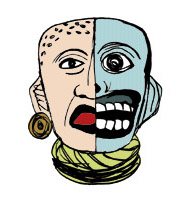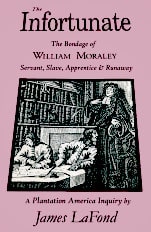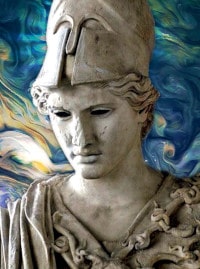Like most of the Kull material this seems to have been written in 1929-30, within the first year of the stock market crash that Howard seemed to think was the logical conclusion of central banking.
Most of the Kull material will be covered in A Thousand Years in His Soul: The Poets—Part Two. Only two samples are reviewed here in Dark Art of an Arуan Mystic. In the context of the present discussion on racially charged hyper-masculine fiction, Kull is best understood as an unsuccessful literary vessel for Howard’s rage at the Political Machine. The present reader will best conceptualize this character and the fantastical setting of Valusia, as a seedbed, a half-mined prequel, to the Conan and Bran Mak Morn series.
Typically, Howard sets the stage with a discussion between Brule and Kull. Brule is a warrior born in a hut, right hand of the king. Kull is that king, having been born an orphan in a cave. They sit and play at chess with a man born in a palace, just as Kull declares, “My wizard menaces your warrior, Brule.”
The dichotomy is clear, the lower a man’s origin in the corrupt civilized matrix, the greater is his actual immediate power in the masculine realm.
The discussion then turns to the nature of that most deadly foe, the wizard. The reader should understand that, for Howard, a wizard was a banker, a lobbyist, the geopolitical puppeteer who was just beginning to find his hold on civilization’s throat in the early part of the 20th Century into which Howard was born. For Howard, Civilization was a soft woman with an exposed throat and her rapist, abuser, enslaver was the manipulative type, the wizard, most clearly exemplified in People of the Black Circle and The Scarlet Citadel. As exemplified in the Kull and Conan stories, the machinations and intrigues of Howard’s mythical prehistoric settings are in truth, very modern, the entire tapestry of his fantasy literature being something of an American allegory.
This story fragment ends at the point where Brule begins to tell a tale about his battle with a wizard of his people. Likely, Howard despaired of selling a Brule story in light of his trouble selling the main character of the series.
I selected this fragment to pair with By This Axe I Rule! because it begins with the totemic language discussed in ‘A Rare Hunt’.
“Kull was the tiger, Brule was the leopard.”
These tales, almost all unsold, show Howard in his true youthful defiance, wedding two outsiders, members of enemy tribes, together in the face of the massive corruption of the decadent kingdom of another race. In terms of Howard’s own mythology, which he went to great lengths to keep consistent, for a Pict like Brule to be the friend of an Atlantean barbarian like Kull, would be like a Celt and a German uniting against the Romans, or a Cherokee and a Shawnee uniting in the face of the Whiteman, an unlikely, yet telling, relationship.
The dreamy quality of the Valusian setting, the very modern machinations of the decadent races, and the tribal nature of the ultra-masculine protagonists, was the foundation of the Robert E. Howard multi-verse, stocked with crumbling and raging worlds in which doomed heroes spit into an evil wind.











